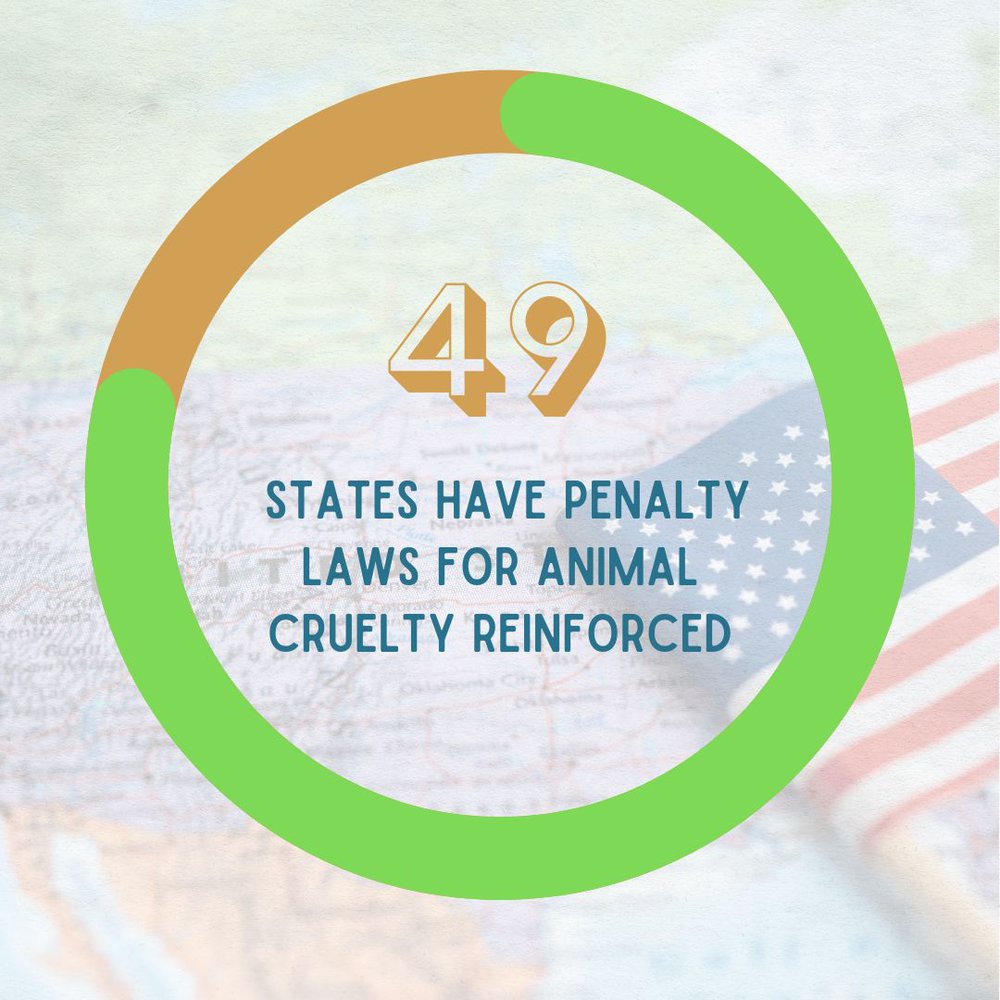In a society increasingly attuned to the rights of all living creatures, understanding the ramifications of animal cruelty is paramount. How much can one be fined for such actions? This question looms large, as the penalties vary widely from state to state, partially reflecting the value placed on animal welfare in different jurisdictions. The issue of animal cruelty casts a dark shadow over our societal values, yet it also sparks a dialogue about justice, compassion, and responsibility. What are the real consequences of such heinous acts, and more importantly, what does the law say about them?
The penalties for animal cruelty can be broadly categorized into civil penalties and criminal penalties, both of which may bear significant consequences for the perpetrator. Civil penalties often come in the form of fines imposed by regulatory agencies, while criminal penalties arise from prosecutions initiated by the state. Understanding these distinctions is crucial for those seeking to comprehend the legal landscape surrounding animal welfare.
Civil Penalties for Animal Cruelty
In the realm of civil penalties, fines are typically administratively assessed and can vary greatly depending on the specific statute violated. Some states impose fines that can reach into the tens of thousands of dollars. For example, frivolous and casual acts of cruelty may incur fines ranging from $500 to $5,000 in many jurisdictions. However, more egregious forms of abuse, especially those involving neglect or torture, can trigger substantially steeper penalties, often exceeding $20,000.
Furthermore, civil penalties often come with restitution orders requiring offenders to compensate for the costs associated with the care and rehabilitation of the abused animal. These costs might include veterinary bills, food, and temporary shelter. This addition serves as a deterrent, aiming to discourage potential violators from ever harming an animal.
Criminal Penalties for Animal Cruelty
When we transition to the discussion of criminal penalties, the stakes rise even further. Animal cruelty can be classified as a misdemeanor or a felony, depending on the severity of the act and what is defined in the corresponding state law. Misdemeanor charges often lead to fines that can range from $1,000 to $5,000, but they also carry the potential for imprisonment for up to one year. Felony charges, for more severe offenses, may result in fines exceeding $50,000 and imprisonment that can last several years. For repeated offenders, jurisdictions may employ harsher sentences, underscoring an increasing commitment to eradicating cruelty.
Some states have enacted mandatory minimum sentences for certain forms of animal cruelty, particularly cases involving severe neglect or torture. These statutes serve as a powerful tool in the legal arsenal against animal abuse. Offenders caught in a cycle of violence may find themselves facing not only substantial fines but also lengthy periods of incarceration, potentially disrupting their lives irreparably.
Variability Across Jurisdictions
The landscape of animal cruelty laws is anything but uniform across the United States. Each state possesses its unique statutes that determine the exact nature of fines and penalties. For instance, some states like California and New York have implemented stringent measures against animal cruelty, enshrining high penalties into law. Others, however, might lack robust provisions, leading to disparities in how offenders are penalized. It begs the question: does the lack of consistent regulation on both civil and criminal levels reflect a disparity in how society values animal rights?
Moreover, the classifications of animal cruelty can vary significantly. Some states have laws addressing specific types of cruelty, like dog fighting or hoarding, while others categorize offenses more broadly. This lack of uniformity can be a double-edged sword, complicating enforcement while also highlighting the need for advocacy to establish stronger protections.
Challenges in Enforcement
An often-overlooked aspect of animal cruelty laws is the challenge in enforcing them. Insufficient resources, trained personnel, and community awareness can impede justice for victims of animal cruelty. A fine may be assessed, yet if there is no effective monitoring system in place to ensure compliance, its deterrent effect diminishes. Imagine a scenario in which a perpetrator pays a fine but continues to perpetrate cruelty unimpeded. What does this say about our justice system?
Moreover, in some instances, the penalties may not be commensurate with the severity of the crime. When judges impose sentences that fail to reflect the gravity of the offense, it can set a dangerous precedent. Victims—both human and animal—may feel that justice has eluded them, which may further normalize acts of cruelty.
Advocacy and Change
Despite the challenges, there is a burgeoning movement advocating for more stringent animal welfare legislation. Organizations and activists are working tirelessly towards educating the public, influencing lawmakers, and enforcing stricter measures against animal cruelty. Through persistent efforts, they aim to close the gaps in current legislation and advocate for increased funding for animal protection agencies.
It is imperative for society to recognize the intrinsic value of animals and the ethical obligation to protect them. By understanding the penalties for animal cruelty—both civil and criminal—we equip ourselves with the knowledge needed to advocate for change. Every fine levied and every sentence imposed serves as a reflection of our collective commitment to a world where all creatures are treated with kindness and respect. Ultimately, the fight against animal cruelty is a journey, one that requires diligence and unwavering compassion.





